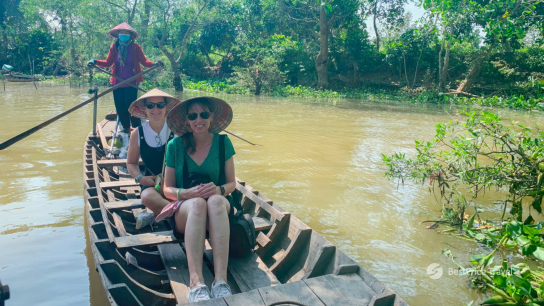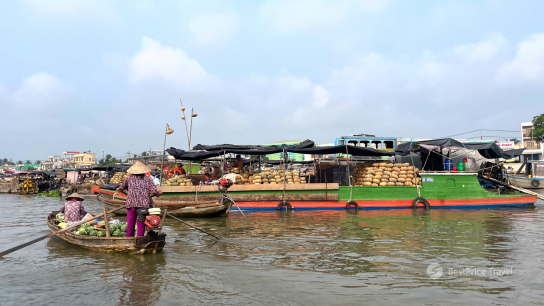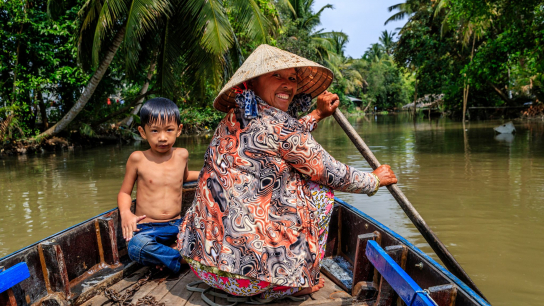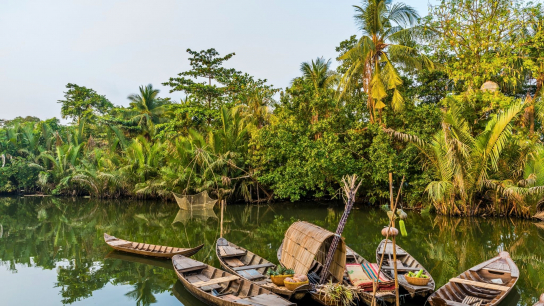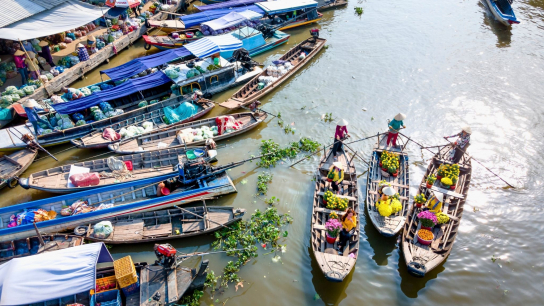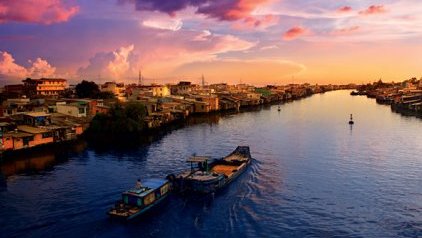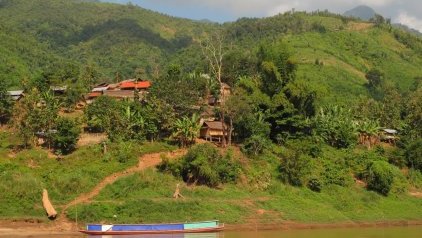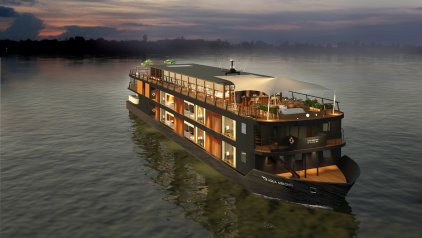Experience Local Life Along Mekong River
Originating high in the Tibetan Plateau, the Mekong River is the life-blood of activity throughout the history of Southeast Asia.
Using the river as your guide is the best way to witness the culture in its most intact form. The Mekong River is an important lifeline as it supports the agriculture, transport, and cultural traditions of a large number of people living along its banks. From source to mouth, the community living along the Mekong continues to live as they have used to for hundreds of years.
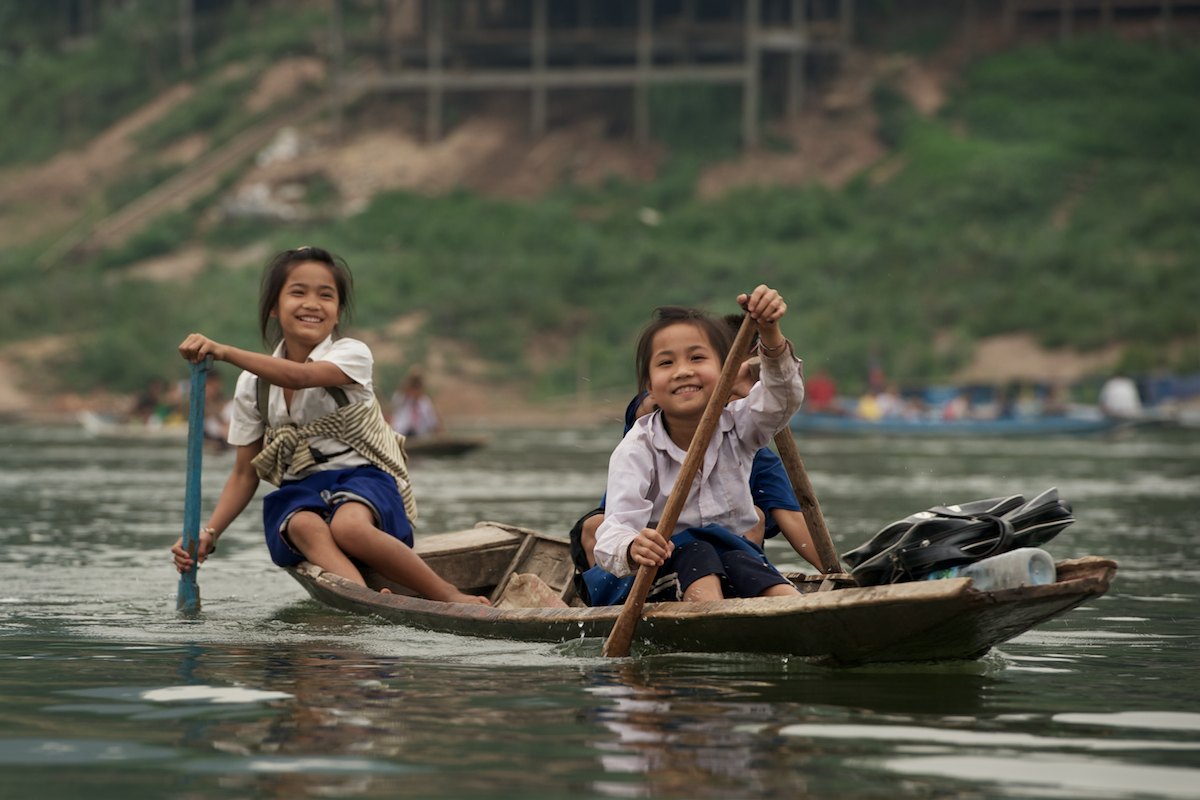
Life on the Mekong River
The Mekong flows through regions of enormous ethnic and cultural diversity on its journey from the melting glaciers of the Tibetan Plateau, in China's Qinghai Province, to the East Sea. Traversing Myanmar (Burma), Laos, Thailand, and Cambodia, the river passes through steep mountain gorges, daunting rapids, and immense alluvial plains in six nations.
Below China, the Mekong becomes narrower, quicker, and less navigable, but it is just as important to the communities which surround it. Cultures of Laos, Thailand, Vietnam, and China farm the lands along the river, and graze their livestock on the hillsides that rise along its banks. The pace of life slows just as the Mekong collects and burgeons, fed by the many tributaries flowing down from the highlands. These beautiful countries with centuries of history and culture, which experienced so much war and dislocation, are now developing swiftly – their welcoming people working hard to secure a better future.
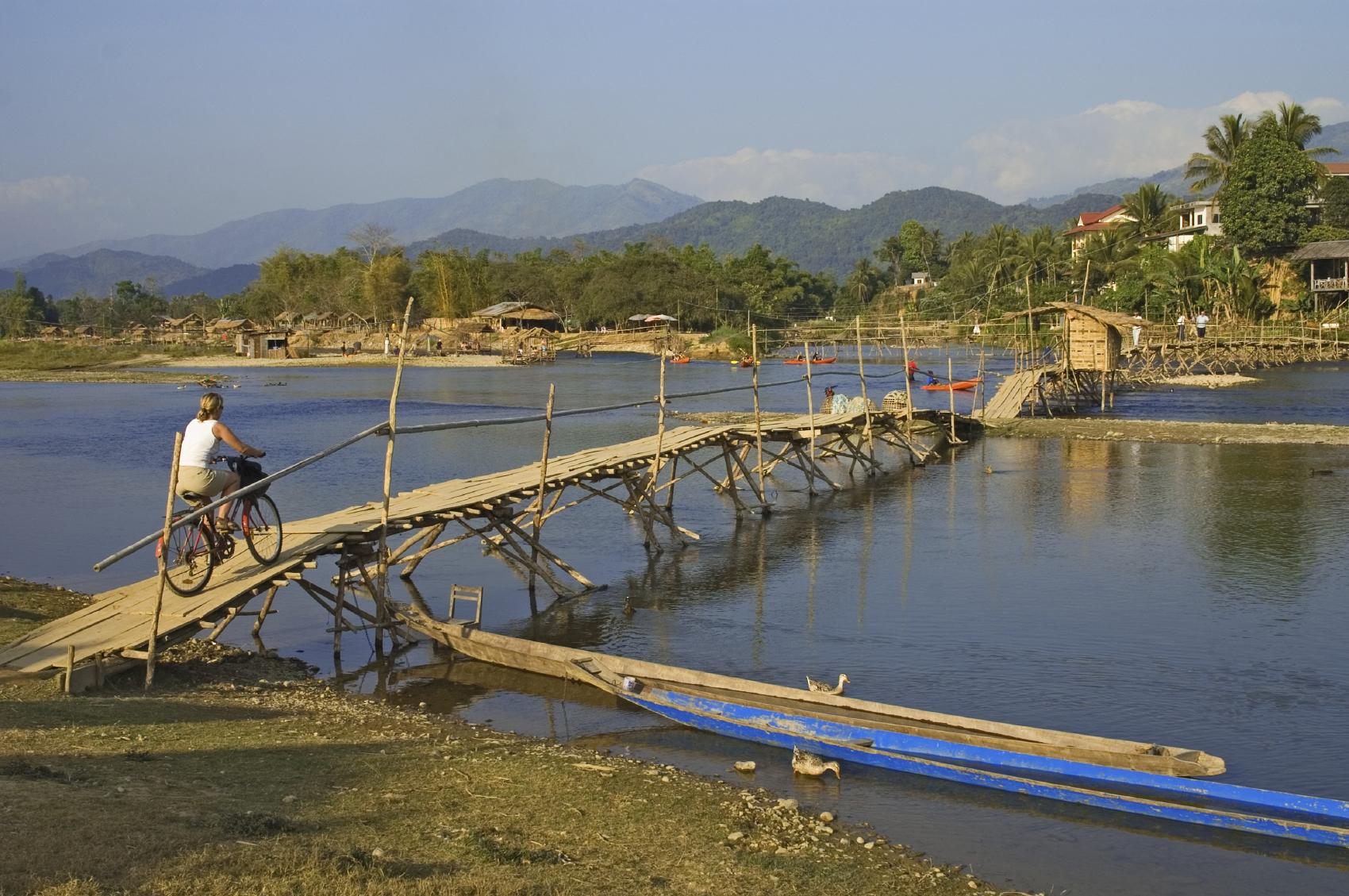
Mekong River in Laos part
Rich rice fields, swarms of fishing boats, and a highly traditional lifestyle are the highlights of exploring this majestic waterway but there is also always something new to be found in this quickly expanding part of the world. Seasonal tides of the Mekong River create varied lifestyles. During low tides, people grow vegetables close to its banks. Fishermen of the Mekong know well that the levels of their catches are related to the tides. When the tide is high between May and June, there are considerable fishes in the river. Their number drops during the low tides between November and April, yet fishing is possible all year long. The Mekong is thus the long-lasting lifeline of people in its basin.
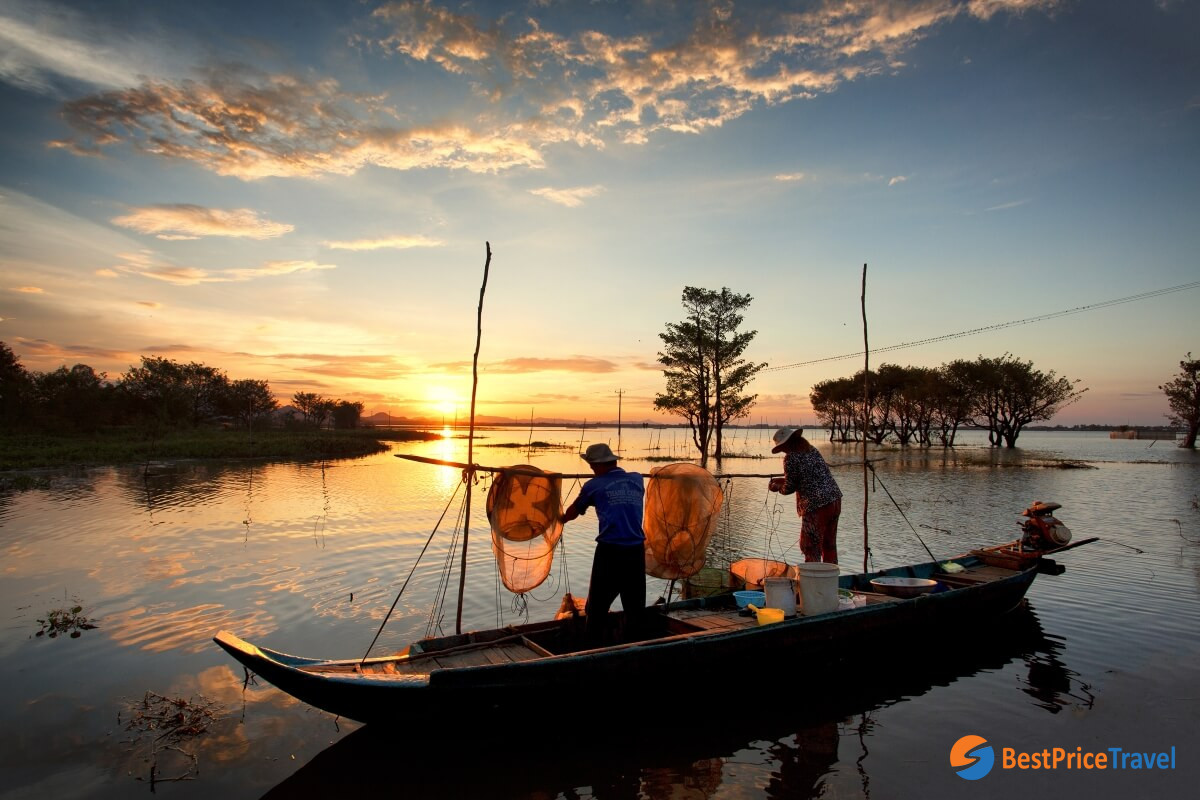
Fisherman in Mekong River
Besides feeding local communities with plant and animal life, the Mekong River also has taken on a cultural significance in each of the areas it touches and inspired a dazzling array of ritual, musical, and artistic expressions.
The combination of stunning scenery, adventuring, and engagement with local culture makes this an ideal trip for anyone looking for an active and engaging journey on a Mekong River Cruise. Along the way, you will experience majestic granite slabs protruding from the Mekong, water buffalo sunbathing on sandbanks, kids running up and down the shore, and stretches of time when only one or two people can be spotted in the dense vegetation. Country life follows the rhythm of the seasons around planting and harvesting the crops. You can also see them fishing in the rivers and lakes to supplement their income. As gorgeous as the river is, you will be on the boat with not much to do but relax and watch the scenery roll by. However, there are many people around you. You will hear squeals with delight from the riverbank and gladly "hello", friendly waves, so do not hesitate to make new friends. Perhaps, booking a homestay with a local family in one of the many villages in this region is the best way to get a deep insight into the daily life of the hospitable people.
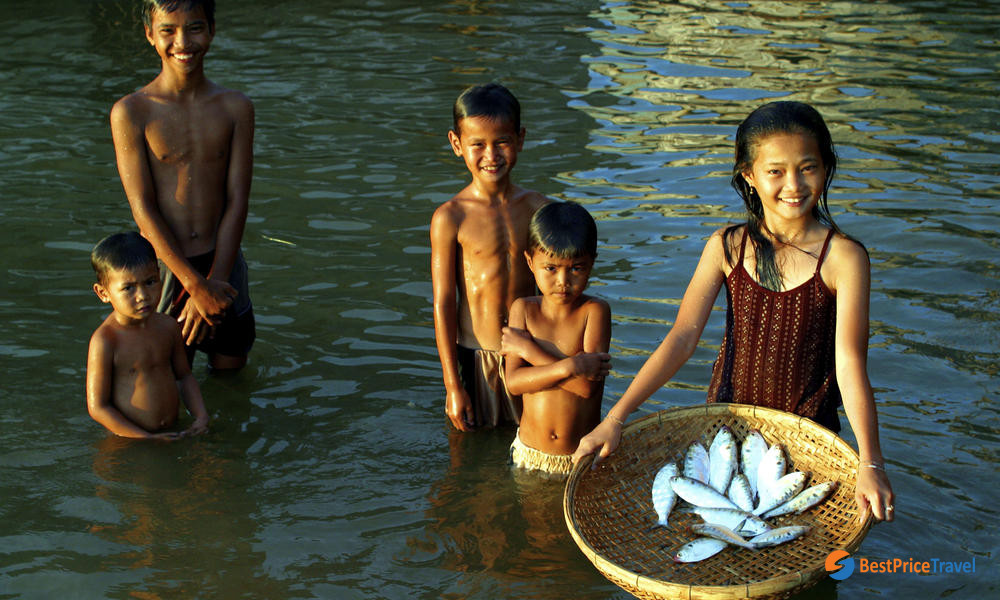
Local swimming in the river
To sum up, the Mekong River is the mother of all Southeast Asian rivers, providing life-sustaining resources to millions of people. Here you can totally experience how local communities rely on the river for local trade, transportation, and the diverse ecosystem which sustains life and livelihood for millions of people.
Read more: Top 6 Recommendations For Mekong River Cruises
Thuy Linh
(Images source: Internet)
